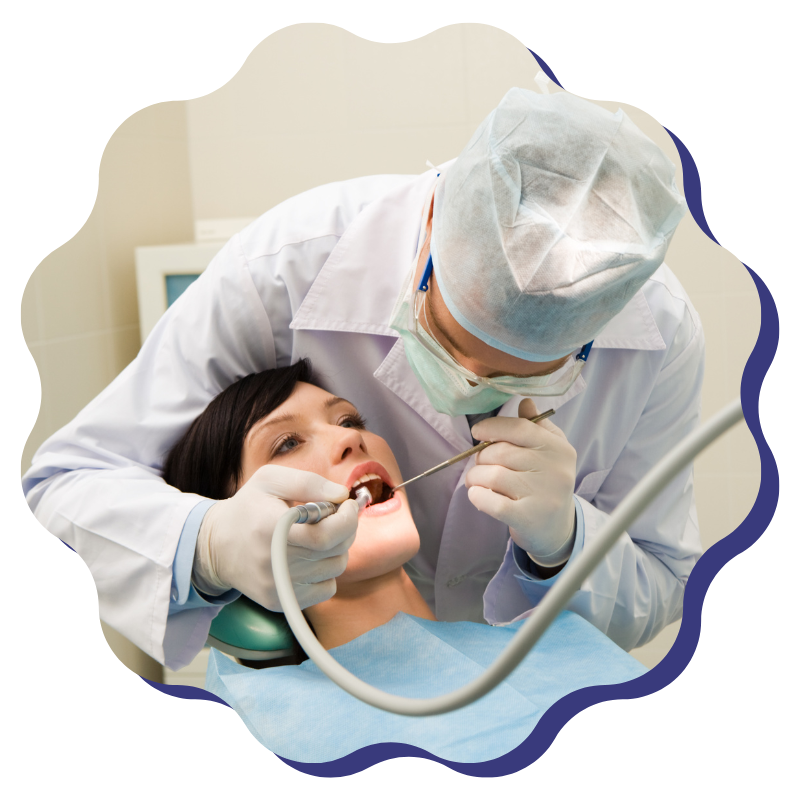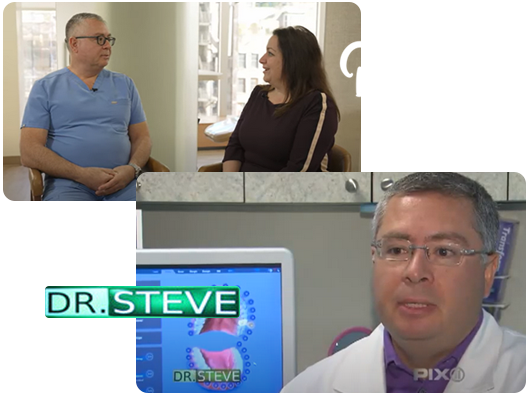LANAP
LANAP
Laser Teeth Whitening NYC
Achieve a dazzling smile with laser teeth whitening in the heart of New York City, Manhattan. Our advanced technology and skilled professionals will ensure you receive top-notch treatment for pristine results.
Say goodbye to stains and discoloration as we brighten your teeth to perfection. Experience the ultimate confidence boost with our cutting-edge dental solutions in NYC’s vibrant borough of Manhattan.
LANAP = Laser Assisted
Regeneration (LAR)
An FDA-cleared laser treatment called the LANAP protocol offers a less painful, more successful treatment alternative to conventional surgery. LANAP=LAR is the only scientifically researched methodology that results in true periodontal regeneration, new bone growth, and gum tissue reattachment.
LANAP and LAR are accomplished with the PerioLase MVP-7. It is a free-running, variable pulsed Nd:YAG laser. The 7 variable pulse durations can be thought of as “different lasers” in one device as they have discrete and discriminating tissue interactions.
The LANAP=LAR treatment is one of the most successful protocols in treating gum disease because it can target the source of the inflammation without hurting or removing any healthy gum tissue, slow or stop attachment loss and decrease pocket depth, and allowing the body to recover from the chronic infection without the need for scalpel or sutures.

LANAP = Laser Assisted
Regeneration (LAR)
An FDA-cleared laser treatment called the LANAP protocol offers a less painful, more successful treatment alternative to conventional surgery. LANAP=LAR is the only scientifically researched methodology that results in true periodontal regeneration, new bone growth, and gum tissue reattachment.
LANAP and LAR are accomplished with the PerioLase MVP-7. It is a free-running, variable pulsed Nd:YAG laser. The 7 variable pulse durations can be thought of as “different lasers” in one device as they have discrete and discriminating tissue interactions.
The LANAP=LAR treatment is one of the most successful protocols in treating gum disease because it can target the source of the inflammation without hurting or removing any healthy gum tissue, slow or stop attachment loss and decrease pocket depth, and allowing the body to recover from the chronic infection without the need for scalpel or sutures.

No Cut, No Sew, No Fear
Originally developed as a simple communication to help patients understand the differences between the LANAP protocol and traditional periodontal surgery, the No Cut, No Sew, No Fear logo helps educate patients and increase treatment acceptance.
By helping to reduce the fear associated with gum surgery, we can help more patients receive the treatment they need.
Patient Benefits
- Less Pain
- Less Bleeding
- Less Gum Loss
- Less Swelling
- Very Little Downtime After Treatment
- Less Post-OP Infections
- Promotes Regeneration of Supporting Gum Tissues
- Healing is perceived to be faster and more comfortable than conventional surgery
Patient Benefits
- Less Pain
- Less Bleeding
- Less Gum Loss
- Less Swelling
- Very Little Downtime After Treatment
- Less Post-OP Infections
- Promotes Regeneration of Supporting Gum Tissues
- Healing is perceived to be faster and more comfortable than conventional surgery
Eighty percent of US adults suffer from some degree of gum disease, making this one of the most common diseases in America.
Yet, only 60 percent know they have gum disease. Worse yet, only 3% of adults with moderate to severe levels of gum disease will accept treatment.
Gum Disease Stages
Heathly Gums
& Tooth
Lumineers provide a remarkably natural and beautiful smile, elevating your overall appearance.
Gingivitis
Calculus buildup on teeth and gums are inflamed (red).
Moderate Periodontitis
Inflammation causes gums to separate from teeth, forming pockets. Early to moderate bone loss
Advanced Periodontitis
Severe bone loss, deep pockets. Tooth is in danger of falling out.
Gum Disease Stages
Heathly Gums
& Tooth
Lumineers provide a remarkably natural and beautiful smile, elevating your overall appearance.
Gingivitis
Calculus buildup on teeth and gums are inflamed (red).
Moderate Periodontitis
Inflammation causes gums to separate from teeth, forming pockets. Early to moderate bone loss
Advanced Periodontitis
Severe bone loss, deep pockets. Tooth is in danger of falling out.
Gums disease begins when a film called plaque accumulates on the teeth and calcium from saliva hardens the plaque — this calcified plaque is called tartar or calculus. Certain types of germs that live in this plaque and calculus damage gum tissue. Your body tries to fight this infection with an inflammatory attack, sending white blood cells to the area to destroy the bacteria. This inflammation causes the tissue to bleed easily when you brush or floss. This stage of the condition is called Gingivitis.
If the infection and inflammation persist the result is a chronic inflammatory condition where, in addition to the gums, ligament and bone around the teeth are destroyed — often with no symptoms. At this stage, it is called Periondontitis.

Signs/Symptoms of Moderate-Advanced
Gum Disease
- Gums that are red, swollen, and bleed easily
- Gums that seem to have pulled away from the teeth
- Bad breath and halitosis
- Pus between your gums or teeth
- Teeth that seem to be loose or moving away from one another
- Changes in the way your teeth fit together when you bite
- Change in the way your partial denture or implant-supported restorations fit
- Sensitive or receding gums
- Painful chewing
- Or no symptoms at all…
Signs/Symptoms of Moderate-Advanced
Gum Disease
- Gums that are red, swollen, and bleed easily
- Gums that seem to have pulled away from the teeth
- Bad breath and halitosis
- Pus between your gums or teeth
- Teeth that seem to be loose or moving away from one another
- Changes in the way your teeth fit together when you bite
- Change in the way your partial denture or implant-supported restorations fit
- Sensitive or receding gums
- Painful chewing
- Or no symptoms at all…
Treatment Options for Gum Disease
Success is determined by the treatment’s ability to reduce or eliminate gum inflammation, slow, or stop attachment loss and decrease pocket depth — and that can vary depending on the type of treatment.
Traditional Gum Surgery
A scalpel is used to cut the gums and then fold or “flap” the gums back in order to expose the roots of the teeth and the jawbone. This allows the dentist to clean all the tartar from the roots and view the bone supporting the teeth. If any damaged bone is present, the bone is then reshaped and/or bone graft material is placed.
The top of the gums may also be cut in order to achieve a periodontal pocket that is 3mm deep to allow the patient to clean effectively. For example, if you had a 6-millimeter pocket depth, then 3 millimeters of gum tissue (healthy or diseased) would have to be removed to create a 3-millimeter pocket. The gums are then stitched back in place and recovery begins.

Traditional Gum Surgery
A scalpel is used to cut the gums and then fold or “flap” the gums back in order to expose the roots of the teeth and the jawbone. This allows the dentist to clean all the tartar from the roots and view the bone supporting the teeth. If any damaged bone is present, the bone is then reshaped and/or bone graft material is placed.
The top of the gums may also be cut in order to achieve a periodontal pocket that is 3mm deep to allow the patient to clean effectively. For example, if you had a 6-millimeter pocket depth, then 3 millimeters of gum tissue (healthy or diseased) would have to be removed to create a 3-millimeter pocket. The gums are then stitched back in place and recovery begins.

What Clients Say
They have a lot of new technology that can pinpoint any issues there might be. Overall, it was a great visit. It was great catching up with her and the rest of the staff.
The whole process was quick and painless. Also, have been going to Nelli for years and she does a great job with the cleanings.
Don't wait any longer - now is the perfect time to transform your teeth and boost your confidence.

Don't wait any longer - now is the perfect time to transform your teeth and boost your confidence.



